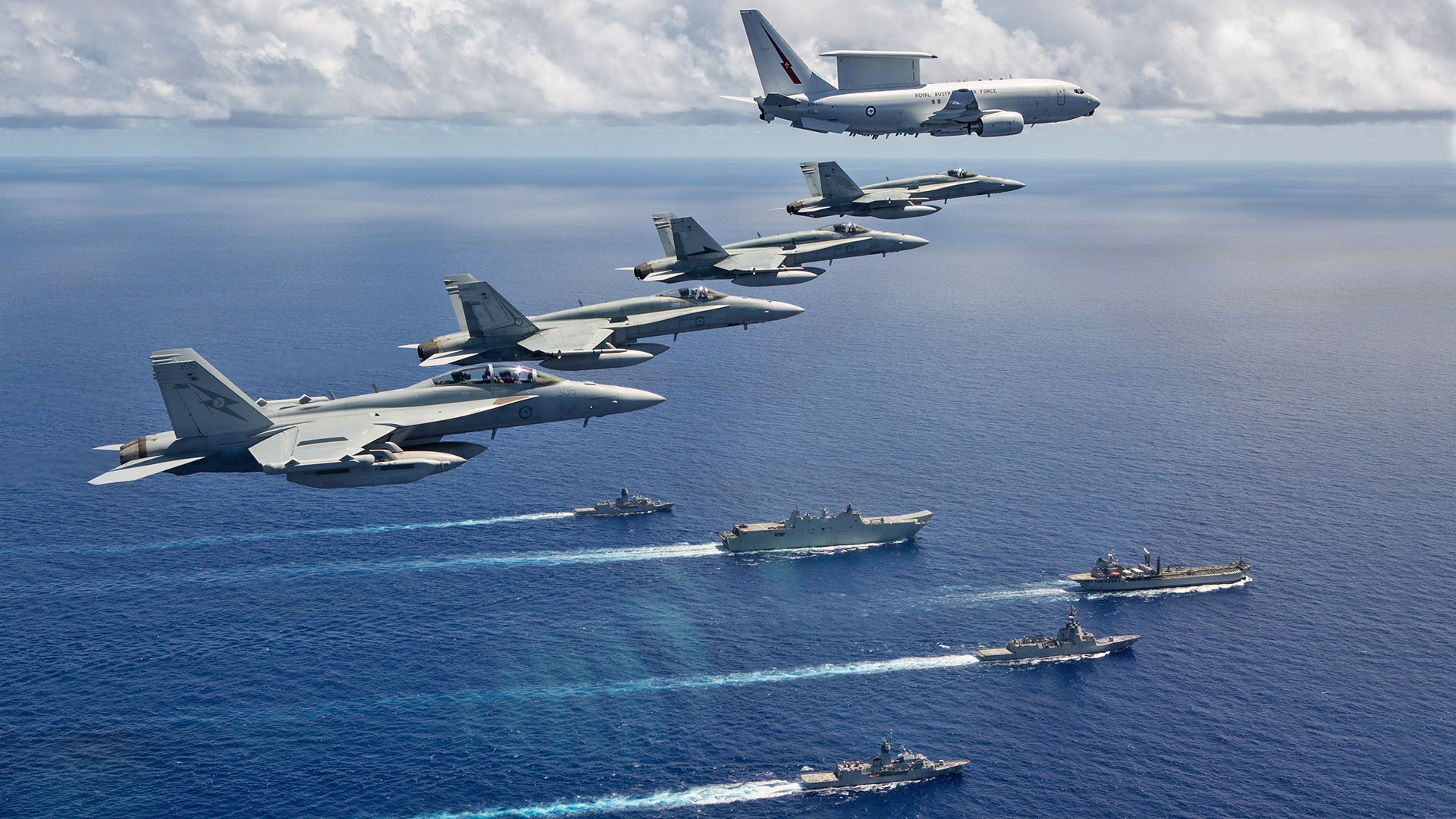Australia has joined forces with the U.S and Japan for a huge trilateral exercise that is being held in the Indo-Pacific region over the coming months. The collaboration brings together the Australian Defense Forces, U.S. Navy, U.S. Air Force, and the Japan Maritime Self-Defense Force, which are engaged in the regional deployment.
The Royal Australian Air Force (RAAF) has dispatched an impressive fleet of fighters, tankers, and an airborne early warning aircraft to Andersen Air Force Base, on the U.S. Pacific island of Guam, as part of the Regional Presence Deployment. This particular phase of the activities runs from July 21 to August 2. The series of events are designed to act as a clear example of how the U.S. is partnering with regional allies amid concerns over security in the Indo-Pacific area, including the South China Sea.
More than 150 RAAF personnel deployed to Andersen AFB as part of a series of training events originally unveiled by Australian Defence Minister Linda Reynolds in early July. The RAAF Air Task Unit on Guam includes F/A-18A Hornets from No. 77 Squadron, EA-18G Growlers from No. 6 Squadron, an E-7A Wedgetail airborne early warning and control aircraft from No. 2 Squadron, and KC-30A Multi-Role Tanker Transports (MRTTs) that will collectively conduct advanced air-sea integration drills with maritime forces.
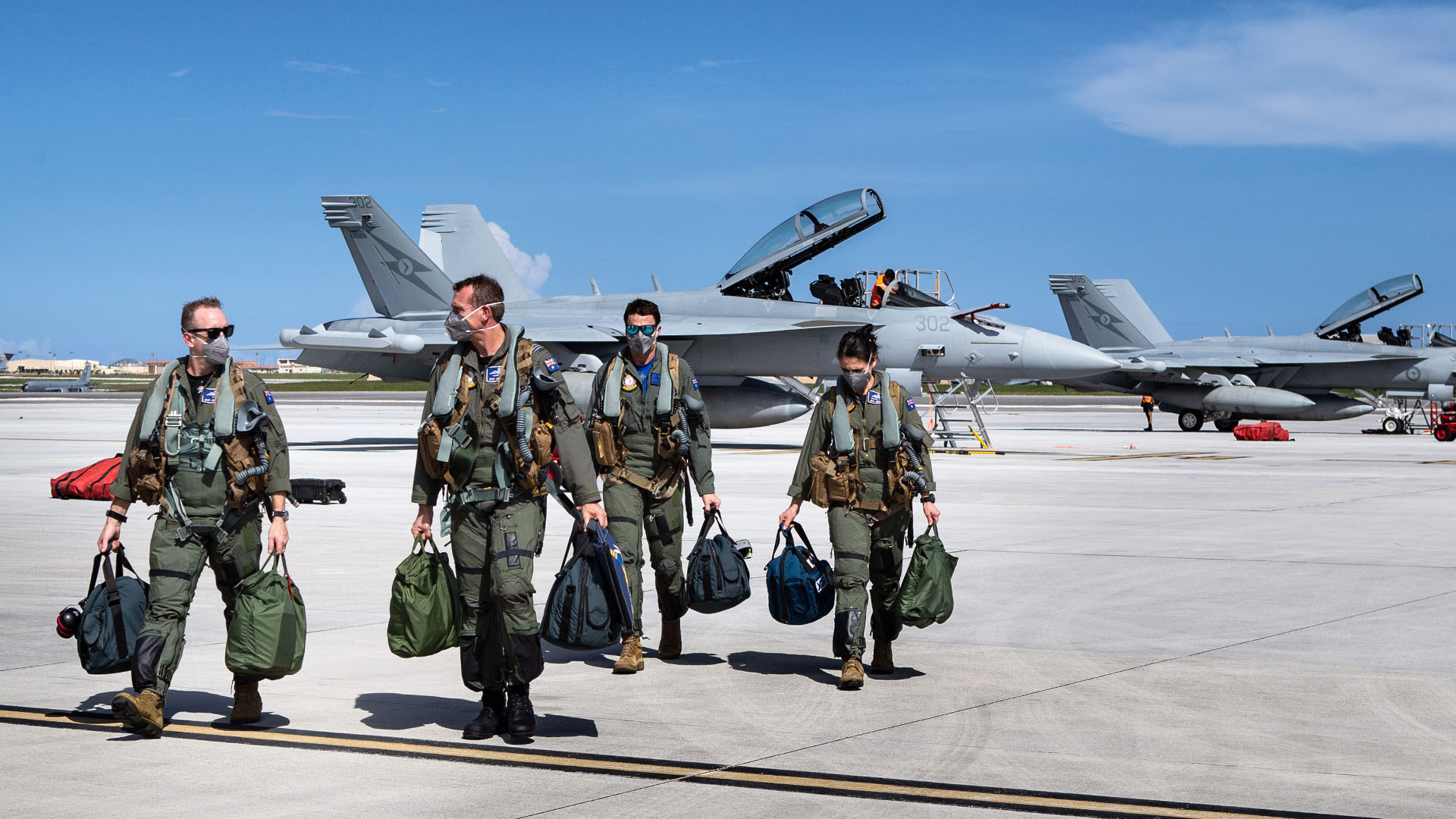
Australian and Japanese naval flotillas joined the U.S. Navy’s Nimitz class aircraft carrier USS Ronald Reagan (CVN-76) and her associated Carrier Strike Group in the Philippine Sea on July 19. It marked the start of the joint exercises that are taking place throughout Southeast Asia and will later move on to Hawaii. Australia and Japan both share long-standing alliances with the U.S. and this year marks the 60th anniversary of the treaty of mutual cooperation and security between America and Japan.
Complementing the land-based air power, the Royal Australian Navy involvement includes the first-in-class amphibious assault ship HMAS Canberra, along with first-in-class destroyer HMAS Hobart, the Anzac class frigate HMAS Arunta, and fleet replenishment ship HMAS Sirius. The Japan Maritime Self-Defense Force (JMSDF) involvement is based around the Akizuki class destroyer JS Teruzuki. “The experience in this exercise will give us tactical and operational advantages and make our friendships stronger, in addition to our regular joint exercises with both like-minded navies,” commented Capt Sakano Yusuke of the JMSDF.
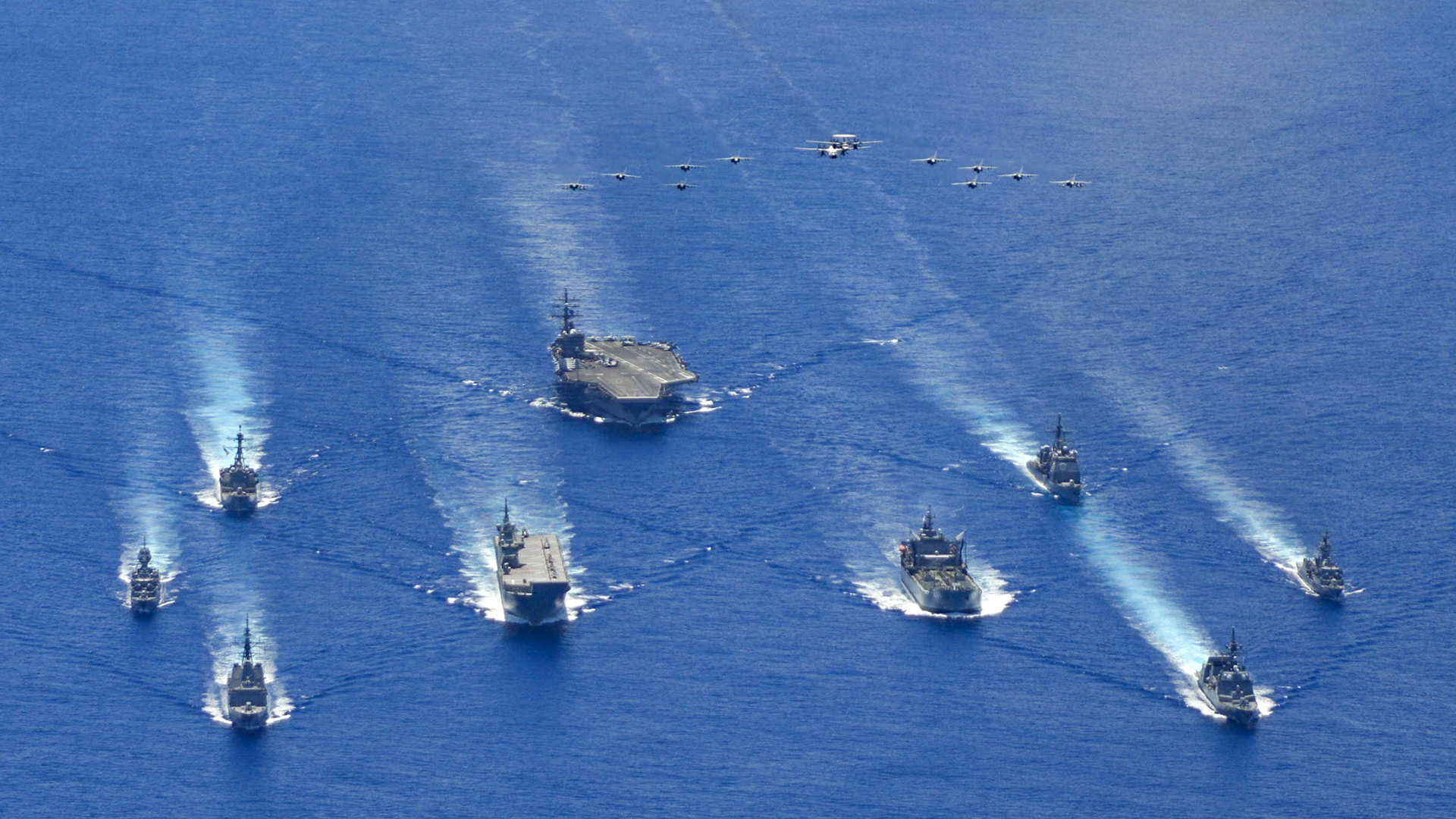
The forward-deployed aircraft carrier USS Ronald Reagan is at the center of the U.S. Navy participation. The Carrier Strike Group includes the embarked Carrier Air Wing Five (CVW-5), the Ticonderoga-class guided-missile cruiser USS Antietam (CG-54), and Arleigh Burke-class guided-missile destroyer USS Mustin (DDG-89).
Exercising interoperability during the ongoing COVID-19 pandemic has led to some unusual operating procedures, particularly related to the health and safety of personnel. In one example, two Australian Army Tiger armed reconnaissance helicopters flew from the Canberra to land on the Ronald Reagan. In line with Australian Government advice relating to COVID-19 restrictions, the helicopter crews remained in the cockpits while U.S. Navy personnel supported the turnaround.
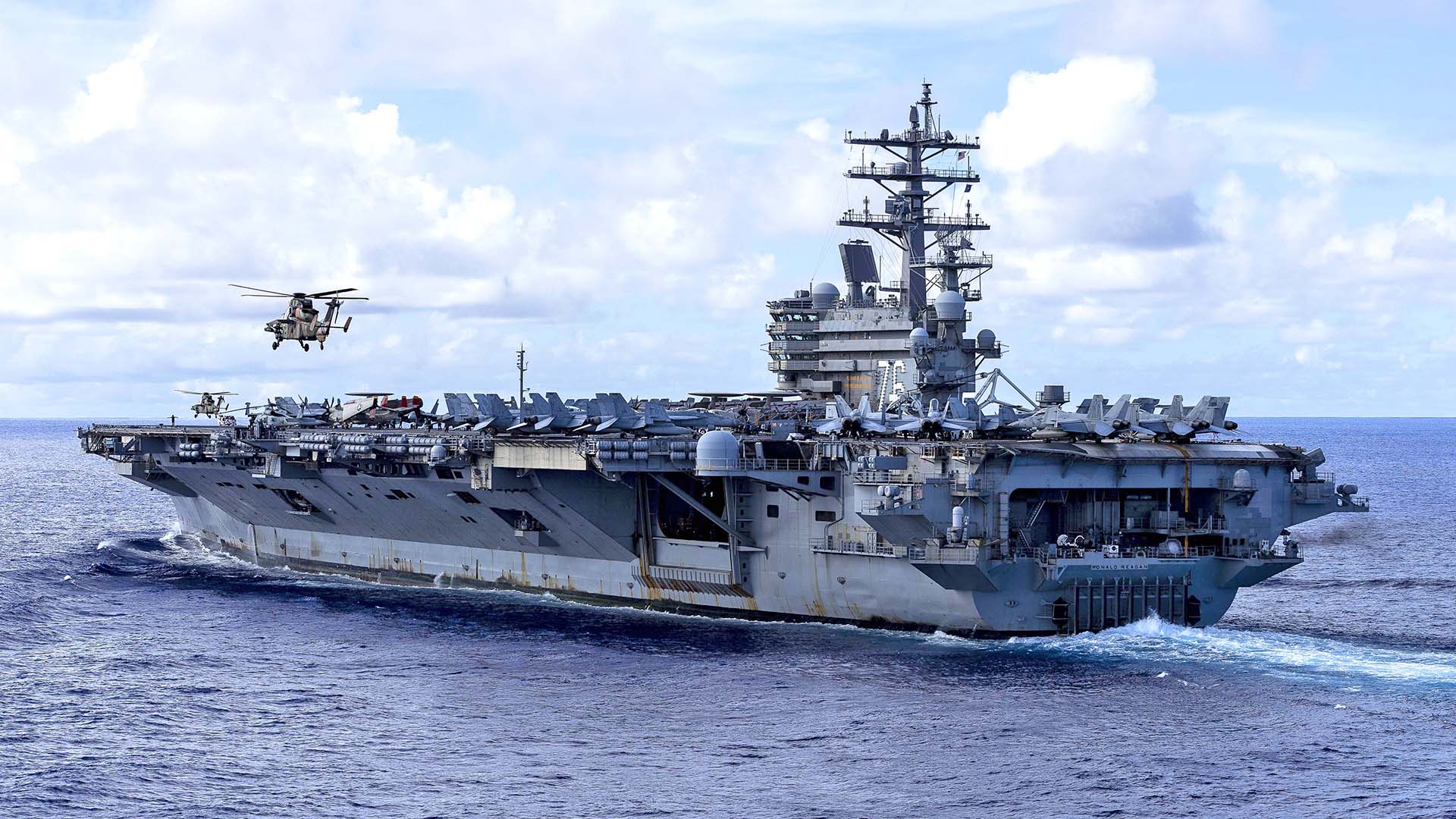
The concept of forward-deploying land-based Army helicopters aboard naval assets, as illustrated by the Tigers aboard HMAS Canberra, is nothing new. In recent years, the U.S. Navy’s converted amphibious transport dock USS Ponce regularly hosted attack helicopters, and its successor, the USS Lewis B. Puller,
continues to do so today. The ability to combine offensive support rotary-wing assets with a maritime environment serves as a useful means to expand their reach and missions set, primarily through the ability to refuel and rearm them at sea.

The various ships will operate together in Southeast Asia, before moving east to participate in the large Rim-of-The-Pacific (RIMPAC) exercise near Hawaii. The overall Australian deployment is planned to encompass a wide range of activities, including bilateral and multilateral naval maneuvers, as well as proving the ability to contribute to regional contingencies and humanitarian assistance missions if they arise.
“Training serials will include a RAAF E-7A Wedgetail working alongside the Royal Australian Navy air warfare destroyer HMAS Hobart to generate the overall air and sea picture,” said Wing Commander Jason Easthope, the Air Task Unit commander.
Australia aims to demonstrate the ability to conduct complex and extended deployments at sea and in the air with its regional partners. Interoperability coupled with maritime integration is a key training objective, particularly during the operations surrounding Guam.
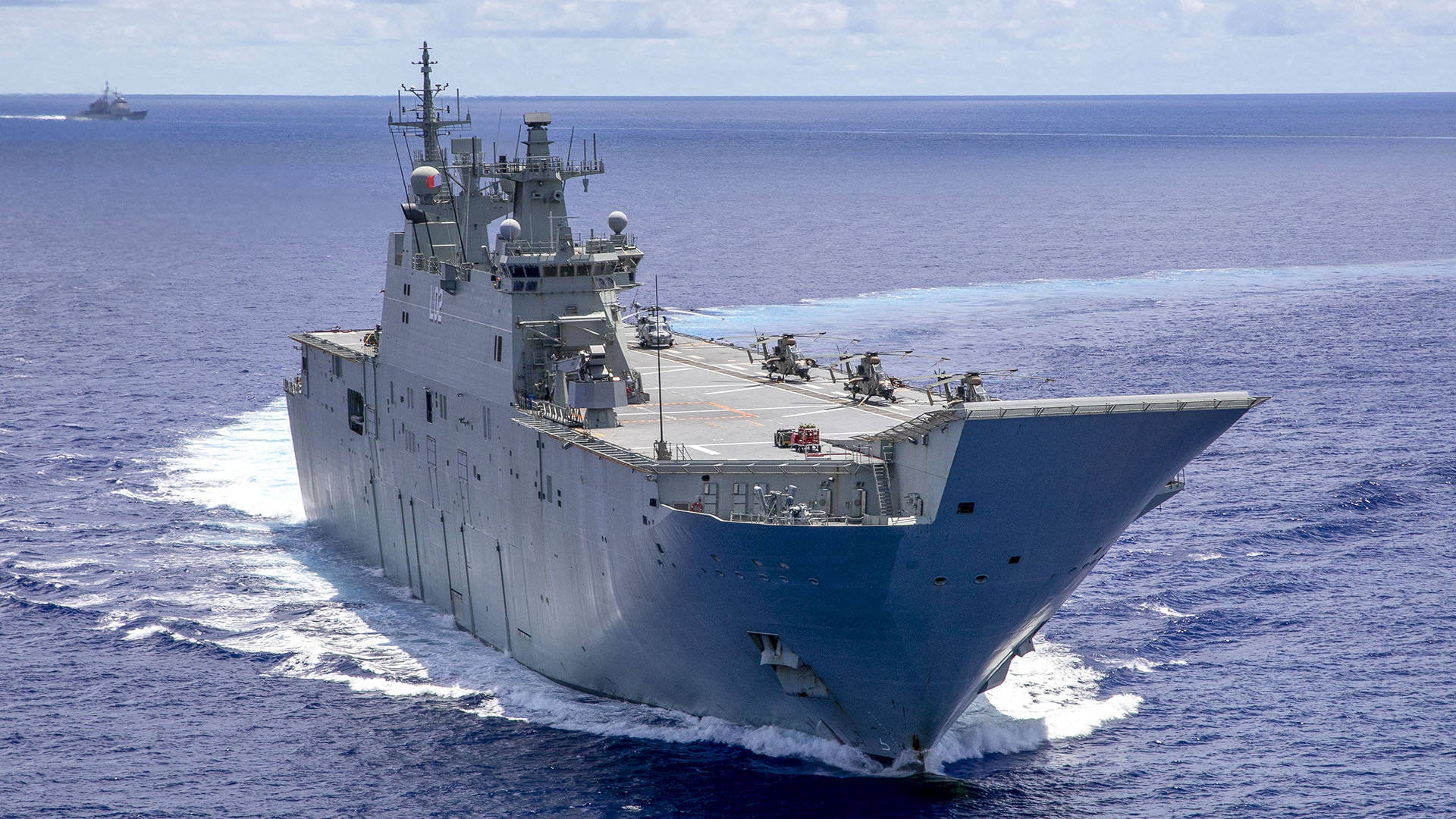
“The opportunity to work alongside the U.S. and Japanese is invaluable,” said Commodore Michael Harris, commander, Australian Joint Task Group. “Maintaining security and safety at sea requires navies to be able to cooperate seamlessly. The combined tasking between our navies demonstrates a high degree of interoperability and compatibility between Australia, the U.S., and Japan.”
Australian and Japanese participation in joint exercises with the U.S. in this region is not unusual. The huge Cope North exercise earlier this year centered upon Andersen AFB, included a range of aircraft from the Japan Air Self Defense Force (JASDF) and the RAAF). “The high-end interoperability we enjoy with the JMSDF and ADF provides us the unique ability to meet at-sea and immediately operate at an advanced level. This highlights the enduring nature of our alliances with Japan and Australia,” said Capt Russ Caldwell, the commanding officer of the USS Antietam. “The U.S is fortunate to routinely operate alongside its allies across the Indo-Pacific, and coordinated operations like these reinforce our mutual commitments to international maritime norms and promoting regional stability.”
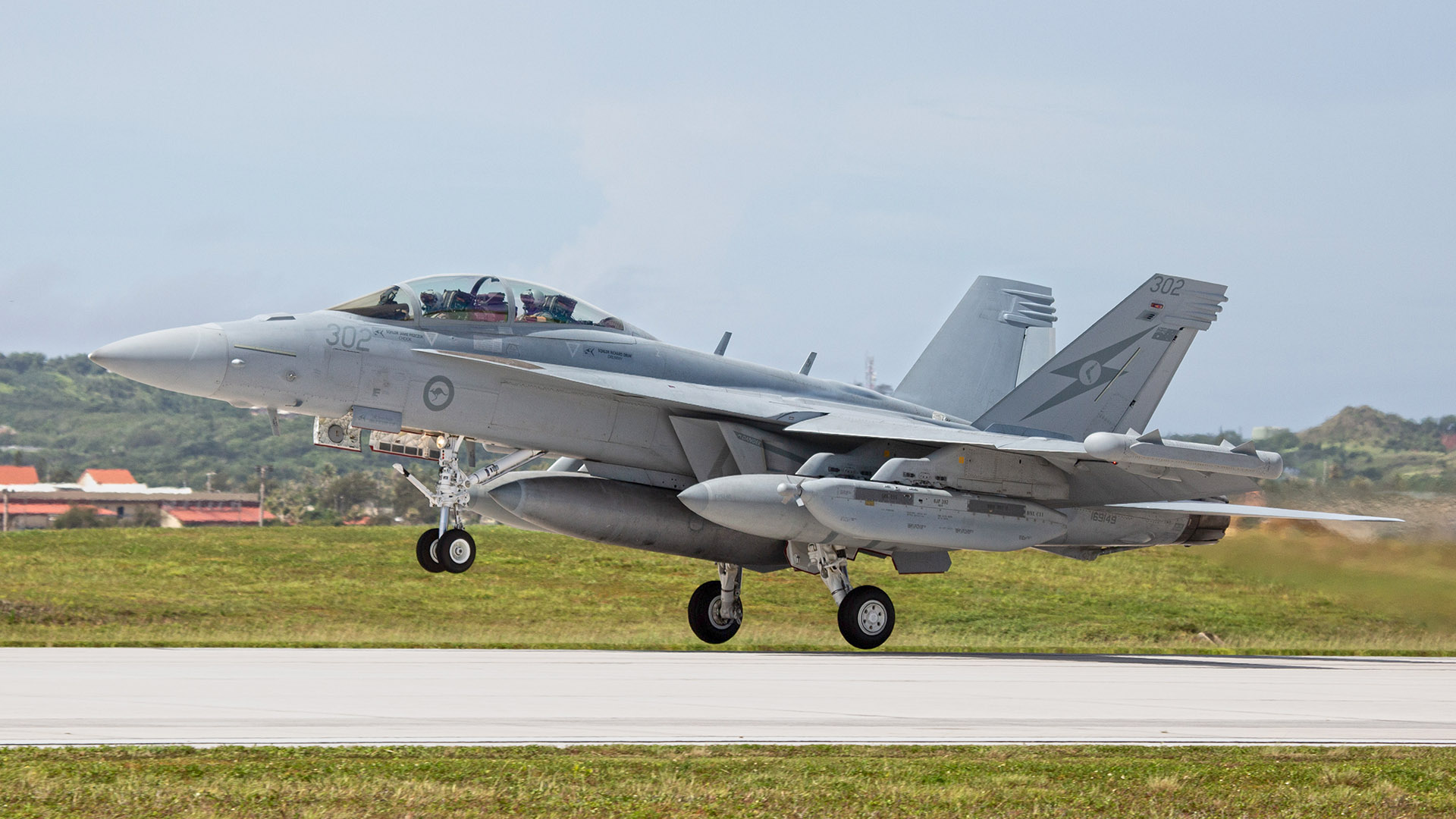
The RAAF deployment to Guam underscores the strategic importance of the island, which stands as a key air force and naval staging base in the western Pacific. Andersen is far enough away from potential adversaries to offer a greater level of survivability during conflict than would be expected for America’s air bases in Japan, for example. However, Guam’s vulnerabilities have led to the U.S looking to expand and exploit other facilities such as Wake Island, which would offer a larger buffer against potential enemy attacks.
That vulnerability of Andersen AFB includes forward-deployed airpower’s reliance on vulnerable runways, which would clearly be a key target in the event of a conflict with China. Guam currently has a U.S. Army Terminal High Altitude Area Defense (THAAD) battery for ballistic missile defense, but an all-out attack would easily overwhelm any defense efforts to render the airfield inoperative.
Admiral Philip Davidson, the commander of U.S. Indo-Pacific Command wants an Aegis Ashore System on Guam by 2026, according to recent reports. The system comes with an estimated price tag of $1.67 billion over six years. This is seen as a vital requirement for protecting Guam that needs to be in place as soon as possible. Aegis Ashore would provide a 360-degree, persistent, integrated missile defense for Guam as part of a new U.S Pacific Deterrence Initiative. Despite the potency of this system, Japan recently rejected Aegis Ashore plans amid strong public opposition to the program and its shoreline basing locations.
The Pentagon is working hard to bring unpredictability to its Pacific theater operating model. Evolving to a new emphasis on austere expeditionary warfare in the Pacific. This includes the use of small landmasses and staging operations from them, setting up shop at austere locations, quickly developing airfields, adding defenses, and completing the mission before moving on.
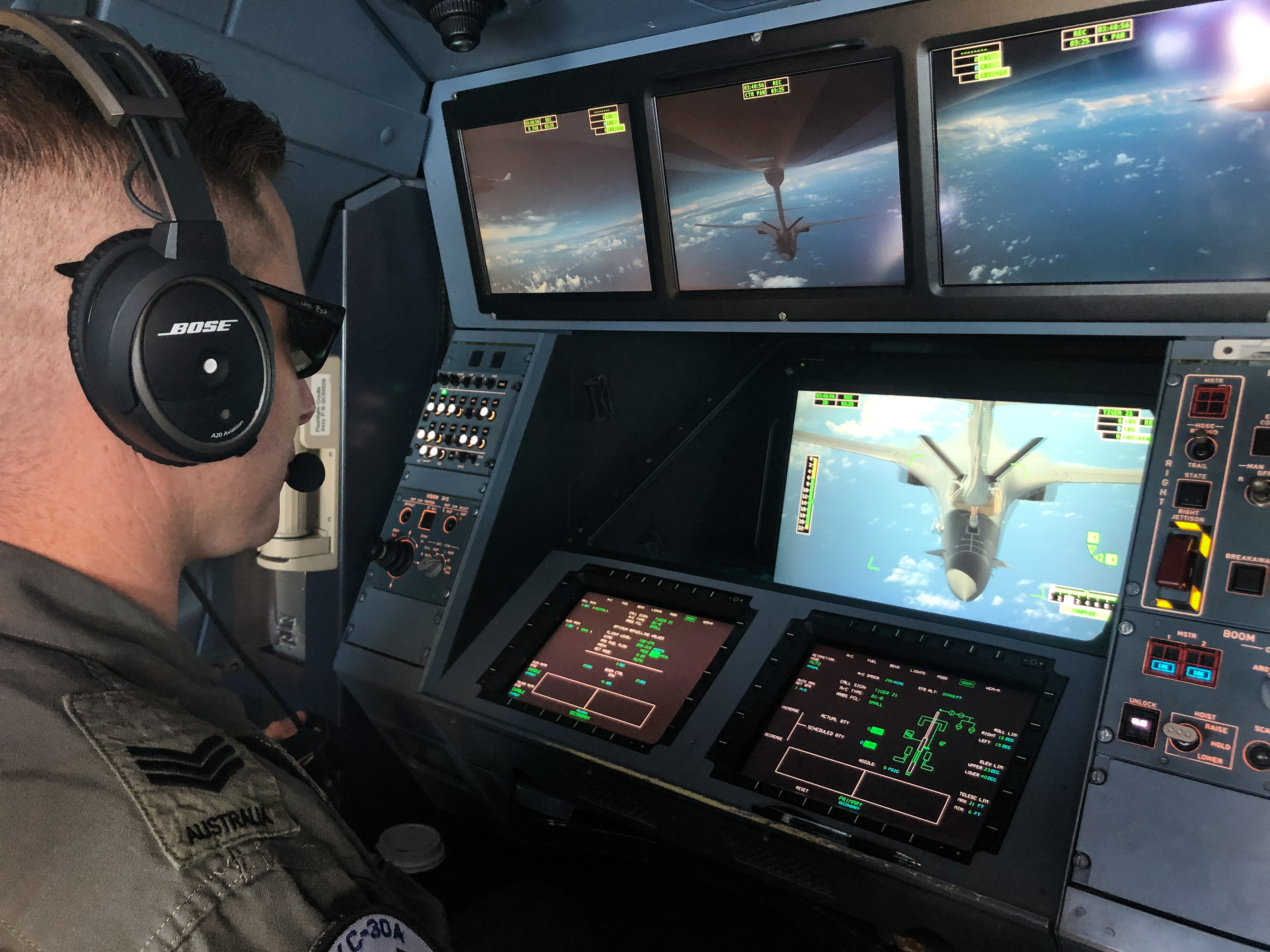
In line with this, in April the USAF ended its 16-year Continuous Bomber Presence in Guam, saying it was now focused on sending smaller bomber deployments to the region as part of a new dynamic force employment model. Air Force Global Strike Command (AFGSC) boss Gen Timothy Ray said this means bombers can operate around the globe, even without being permanently deployed to bases abroad: “We can come and go anytime they need us, we don’t need to be there physically,” he said.
The latest series of Indo-Pacific joint exercises come during a particularly low ebb in U.S.-Chinese relations. This has been exacerbated by a number of factors including new security laws in Hong Kong, the ongoing COVID-19 pandemic, and an aggressive Chinese stance toward Taiwan.
Recent months have seen a notable increase in U.S. military activity in the South China Sea, which was monitored and amplified by the Chinese SCS Probing Initiative, as is detailed in this piece by the War Zone. U.S. Secretary of State Mike Pompeo formally rejected many of China’s maritime claims in the South China Sea in July. He said that Beijing’s claims to offshore resources across the area were “completely unlawful.”
The joint nature of the recent exercises also included the Indian Navy on July 20, when the USS Nimitz (CVN-68) worked together with four Indian ships during a passing exercise, known as a Passex, near the Andaman and Nicobar Islands. The possible invitation for Australia to join the U.S.-Indian Malabar exercise is yet another example of expanding U.S. military cooperation with allies in the Pacific, with a clear eye toward challenging China.
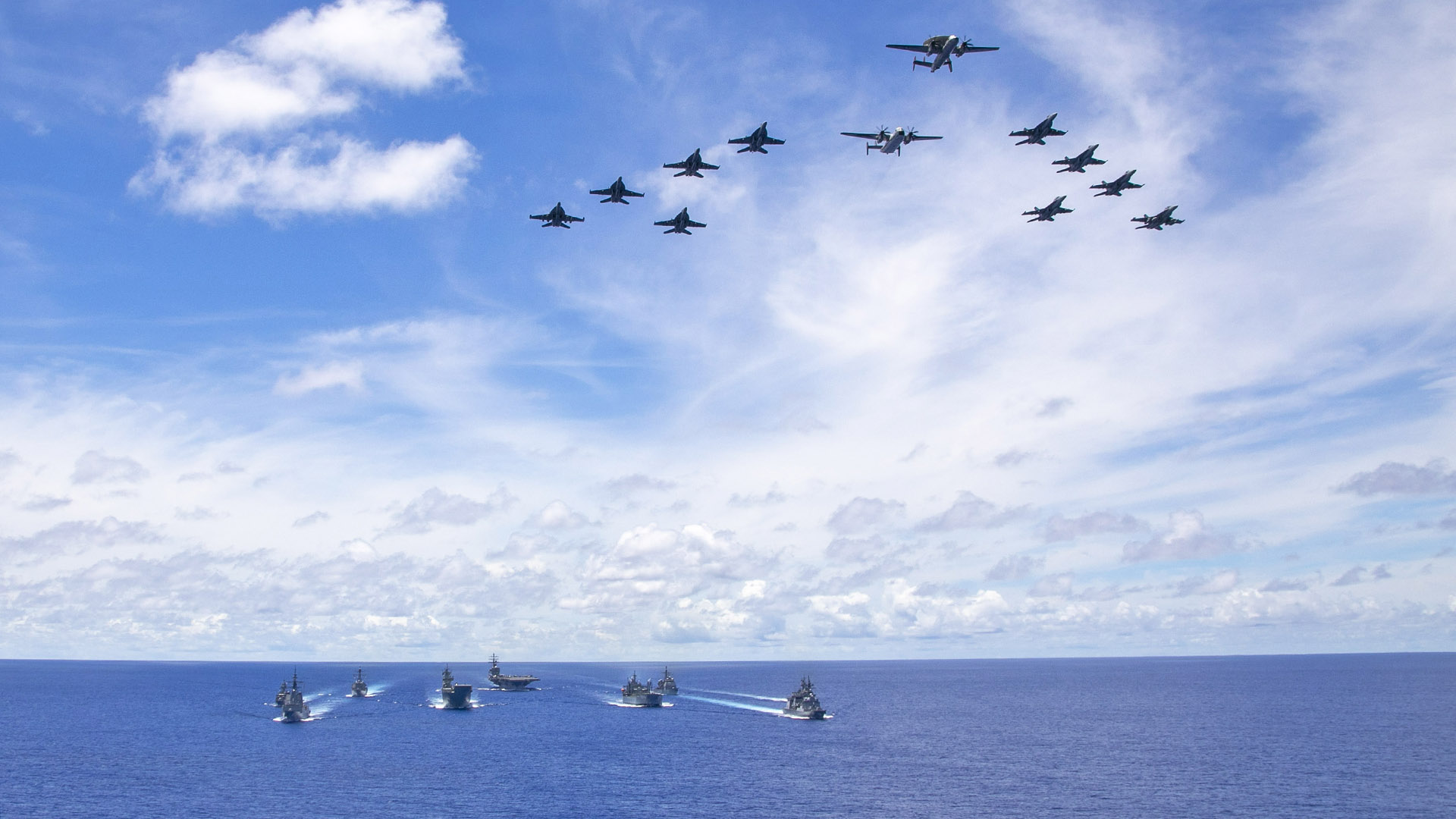
Early July also saw the USS Nimitz and USS Ronald Reagan operating jointly in the South China Sea in the first dual-carrier exercise there in six years. In addition, U.S. Air Force B-52Hs flew all the way to the area from Barksdale Air Force Base in Louisiana before they landed on Guam.
The USAF continuous bomber presence in Guam may have ended, but it hasn’t resulted in a vacuum of activity from Air Force Global Strike Command in the region or from Guam itself. In May, four B-1B Lancers from the 7th Bomb Wing returned here for yet another deployment. These aircraft have also been working alongside the RAAF aircraft since their arrival in July, including KC-30A tankers supporting the bombers’ missions.
These U.S.-led exercises illustrate a clear resolve for the U.S., Australia, and Japan to stand shoulder-to-shoulder when it comes to this critically important and volatile theater. Bringing together multi-faceted military capability and operating with uncomplicated understanding is essential to providing a firm deterrent through agile and scalable warfighting.
Contact the author: Jamie@thedrive.com
